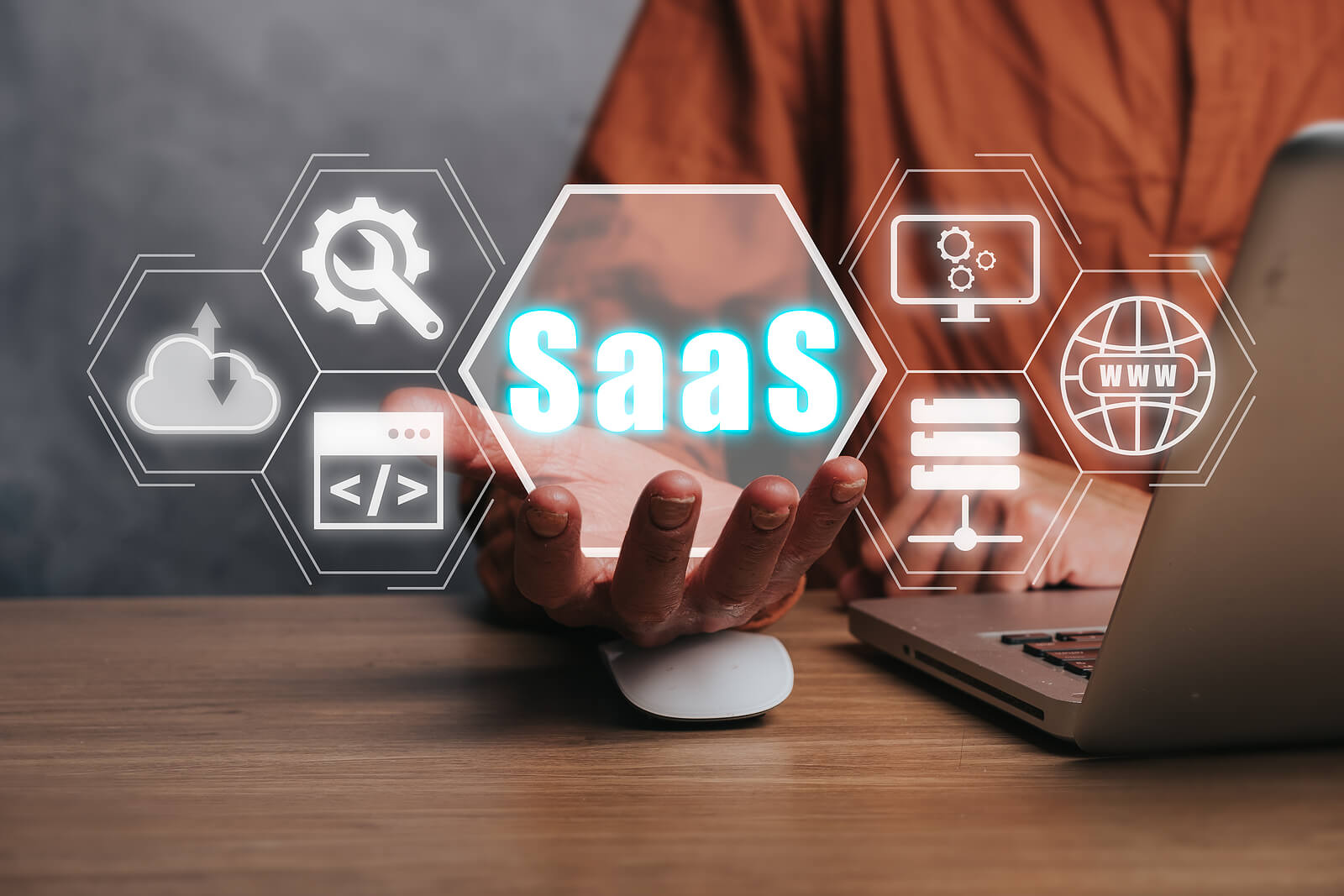Introduction
Welcome to the world of Software as a Service (SaaS) customer success! In today’s highly competitive business landscape, companies are constantly striving to provide exceptional customer experiences in order to retain their customers and drive growth. SaaS customer success plays a crucial role in achieving this goal by ensuring that customers not only achieve their desired outcomes but also have a positive and seamless experience with the software.
But what exactly is SaaS? It is a software distribution model where customers access software over the internet, typically on a subscription basis. Unlike traditional on-premise software, SaaS eliminates the need for costly hardware installations and complex maintenance, making it a cost-effective and scalable solution for businesses of all sizes.
Now, let’s delve into the concept of customer success. Customer success revolves around proactively guiding customers through their journey with a product or service, ensuring they achieve their desired outcomes and derive maximum value. It goes beyond customer support and focuses on building long-term relationships by understanding customers’ unique needs and delivering customized solutions.
The importance of customer success in the SaaS industry cannot be overstated. In a subscription-based business model, customer retention and satisfaction are key drivers of revenue and growth. By prioritizing customer success, SaaS companies can reduce churn, increase customer lifetime value (CLV), and drive advocacy and referrals.
So, what are the key principles of SaaS customer success? First and foremost, it involves a deep understanding of the customer’s business goals and desired outcomes. By aligning the software’s capabilities with the customer’s objectives, businesses can truly demonstrate the value they provide. Additionally, proactive engagement, effective communication, and continuous relationship-building are essential in ensuring ongoing customer success.
Within the SaaS customer success ecosystem, customer success managers (CSMs) play a pivotal role. They act as trusted advisors, guiding customers through their journey by offering personalized support, training, and strategic advice. CSMs not only help customers maximize the value of the software but also serve as a key point of contact for addressing any concerns or challenges that may arise.
Measuring the success of customer success efforts is paramount. SaaS companies rely on metrics and key performance indicators (KPIs) such as customer churn rate, customer satisfaction score (CSAT), net promoter score (NPS), and expansion revenue to assess the effectiveness of their customer success strategies. These metrics provide valuable insights into customer sentiment and help drive continuous improvement.
While SaaS customer success brings numerous benefits, it is not without its challenges. The diverse needs and expectations of customers, rapidly evolving technologies, and ever-changing market dynamics pose unique hurdles for SaaS companies. However, by staying agile, proactive, and adaptable, businesses can overcome these challenges and deliver exceptional customer experiences.
In the following sections, we will explore various strategies for effective SaaS customer success, covering aspects such as onboarding, adoption, retention, and expansion. By implementing these strategies, SaaS companies can foster long-term customer loyalty, drive growth, and stay ahead in a competitive market.
What is SaaS?
SaaS, which stands for Software as a Service, is a cloud-based software delivery model where customers access applications over the internet, rather than installing and maintaining the software on their own computers or servers. In this model, software providers host and manage the applications, ensuring seamless accessibility and reliability for users.
Unlike traditional software, which requires upfront investment in hardware, installation, and ongoing maintenance, SaaS offers a more cost-effective and scalable solution. Customers can simply subscribe to the software on a pay-as-you-go basis, eliminating the need for large upfront expenses and long-term commitments. This makes SaaS particularly advantageous for small and medium-sized businesses, as it allows them to access advanced software capabilities without breaking the bank.
One of the key benefits of SaaS is its flexibility and scalability. As businesses grow and evolve, they can easily adjust their software requirements without the need for additional infrastructure or complex migrations. SaaS applications are typically designed to be highly customizable, allowing users to configure the software to suit their specific needs and workflows.
Furthermore, SaaS provides seamless updates and upgrades. Software providers constantly enhance and improve their offerings, rolling out new features and functionalities to customers without any disruption or effort on the users’ end. This ensures that customers are always working with the latest version of the software, benefiting from continuous innovation.
Another advantage of SaaS is its accessibility. Users can access their applications from any device with an internet connection, whether it’s a computer, tablet, or smartphone. This mobility allows for greater flexibility and productivity, as users can work from anywhere, collaborate with team members, and access critical information on the go.
Security is also a top priority in the SaaS model. Software providers invest heavily in robust security measures to protect customer data and ensure compliance with industry regulations. With dedicated security teams and data encryption protocols, SaaS applications offer a higher level of security than many on-premise solutions.
Overall, SaaS is transforming the software industry by offering cost-effective, flexible, and scalable solutions to businesses of all sizes. It empowers companies to focus on their core competencies while leveraging advanced software capabilities to drive growth and innovation. As technology continues to evolve, SaaS is expected to become even more prevalent, shaping the future of software delivery.
What is Customer Success?
Customer success is a business methodology that focuses on proactively guiding and supporting customers throughout their journey with a product or service to help them achieve their desired outcomes. It goes beyond customer support and aims to build long-term relationships by understanding the unique needs of customers and providing tailored solutions to meet those needs.
At its core, customer success revolves around ensuring that customers realize the maximum value from their purchase. This entails working closely with customers to identify their goals, helping them understand how the product or service can help them achieve those goals, and providing the necessary resources and support to drive successful outcomes.
Customer success is a holistic approach that involves various stages of the customer lifecycle. It begins with effective onboarding, where customers are introduced to the product, educated on its features and functionalities, and guided on how to best utilize it for their specific needs. This sets the foundation for a strong customer-vendor relationship.
As the customer continues to use the product, customer success managers play a critical role in ensuring ongoing adoption and success. They act as trusted advisors and strategic partners, offering personalized guidance, training, and support to address any challenges and help customers achieve their desired outcomes.
Customer success also involves proactive communication and engagement. Customer success managers regularly check in with customers, seeking feedback, addressing concerns, and providing updates on new features or capabilities that may benefit them. This level of engagement fosters a sense of partnership and demonstrates the vendor’s commitment to the customer’s success.
Furthermore, customer success is not limited to existing customers. It also involves expanding the relationship and driving customer advocacy. Satisfied and successful customers become advocates for the product or service, promoting it to others and potentially bringing in new business through referrals. This positive word-of-mouth marketing not only enhances the vendor’s reputation but also drives growth.
Measuring customer success is essential to ensure that the strategies and initiatives implemented are effective. Metrics such as customer satisfaction scores (CSAT), net promoter scores (NPS), and product adoption rates provide valuable insights into customer sentiment and help identify areas for improvement. By tracking these metrics, companies can continuously refine their customer success strategies and enhance the overall customer experience.
In summary, customer success is a proactive approach to cultivating strong and mutually beneficial relationships with customers. It goes beyond traditional customer support and focuses on driving successful outcomes by understanding customer needs, providing personalized support, and fostering ongoing engagement. By prioritizing customer success, businesses can create loyal customers, drive growth, and differentiate themselves in a competitive market.
The Importance of Customer Success in SaaS
In the SaaS industry, customer success is not just a nice-to-have concept; it is a crucial component for sustainable growth and profitability. Here are some reasons why customer success is highly important in the context of SaaS:
1. Customer Retention: SaaS companies operate on a subscription-based model, where customer retention is vital for long-term success. Customer success plays a pivotal role in reducing churn and ensuring that customers continue their subscription. By helping customers achieve their desired outcomes and continuously delivering value, businesses can foster strong relationships and increase customer loyalty.
2. Revenue Growth: Satisfied and successful customers are more likely to expand their usage and become advocates for the product or service. Through upselling and cross-selling opportunities, customer success can drive revenue growth. By demonstrating the value of additional features or upgrades and offering personalized recommendations, businesses can increase customer lifetime value (CLV) and generate more revenue.
3. Competitive Advantage: In a highly competitive SaaS market, customer success can serve as a differentiating factor. When customers have a positive experience and achieve their desired outcomes, they are more likely to stick with a vendor and recommend it to others. This not only enhances the vendor’s reputation but also helps in acquiring new customers, giving businesses a competitive edge.
4. Customer Insights and Iterative Improvement: Customer success initiatives provide valuable insights into customer preferences, pain points, and usage patterns. By analyzing these insights, SaaS companies can iterate and improve their products or services. Continuous feedback loops with customers, through methods like surveys or user groups, allow businesses to stay in touch with changing customer needs and make informed decisions.
5. Customer Satisfaction and Referrals: When customers have a positive experience with a SaaS product or service, their satisfaction levels increase. Satisfied customers are more likely to become promoters and refer the product to others, contributing to organic growth. Referrals not only bring in new customers but also tend to have a higher retention rate and a shorter sales cycle, further fueling business growth.
6. Enhanced Product Adoption: Customer success efforts focus on driving product adoption and providing ongoing support. By ensuring that customers fully understand and utilize the software’s capabilities, businesses can maximize the value customers derive from the product. This ultimately leads to higher customer satisfaction, reduced friction, and increased customer loyalty.
7. Brand Reputation: Customer success is closely tied to a company’s reputation. When businesses prioritize the success of their customers and consistently deliver value, it enhances their brand image and credibility. A strong reputation attracts new customers and builds trust, allowing SaaS companies to maintain a competitive position in the market.
Overall, customer success is not only important but necessary in the SaaS industry. It directly impacts customer retention, revenue growth, competitive advantage, customer satisfaction, product adoption, and brand reputation. By investing in customer success initiatives and prioritizing customer outcomes, SaaS companies can create a win-win situation where both the customers and the business thrive.
Key Principles of SaaS Customer Success
Successful implementation of customer success strategies in the SaaS industry requires adherence to certain key principles. These principles serve as guiding factors to ensure that customers are continuously supported, engaged, and achieve their desired outcomes. Here are the key principles of SaaS customer success:
1. Deep Understanding of Customer Goals: Customer success begins with gaining a deep understanding of the customer’s goals, objectives, and desired outcomes. By understanding their unique needs, SaaS companies can align their product or service offerings to deliver the maximum value and help customers succeed.
2. Proactive Engagement: Customer success is not a passive endeavor; it requires proactive engagement with customers. Customer success managers (CSMs) play a crucial role in initiating regular communication, seeking feedback, and addressing any challenges or roadblocks that customers may face along their journey.
3. Customized Solutions: One size does not fit all in customer success. Each customer is unique and has distinct requirements. SaaS companies should focus on providing customized solutions that are tailored to meet the specific needs of each customer. This could involve personalized training, configuration assistance, or even developing new features to address specific use cases.
4. Continuous Education and Enablement: Customer success is an ongoing process, and education and enablement are essential components. SaaS companies should empower customers with the knowledge and tools necessary to make the most of their product or service. This could include providing comprehensive documentation, tutorials, webinars, or dedicated training sessions.
5. Data-Driven Decision Making: Customer success strategies should be grounded in data and insights. By collecting and analyzing customer data, SaaS companies can identify trends, monitor usage patterns, measure outcomes, and make informed decisions that drive continuous improvement. Customer success metrics, such as customer satisfaction scores (CSAT) and success milestones, should be tracked to assess progress.
6. Collaborative Partnership: Customer success is a collaborative effort between the SaaS company and the customer. It involves building a strong partnership and fostering open lines of communication. SaaS companies should actively seek input from customers, involve them in product roadmap discussions, and consider their feedback when making strategic decisions.
7. Continuous Value Delivery: Customer success is not a one-time event; it is an ongoing journey. SaaS companies should consistently deliver value to their customers, ensuring that the product or service remains relevant and useful over time. This could involve rolling out new features, providing regular updates, or offering additional resources to help customers achieve new levels of success.
8. Outcome-Based Approach: Rather than focusing solely on product features, customer success should be oriented towards achieving specific outcomes for the customer. SaaS companies should understand the value customers seek to derive from their product or service and guide them towards attaining those outcomes. This helps in building a strong customer-centric approach and promoting long-term success.
By following these key principles, SaaS companies can establish a foundation for effective customer success initiatives. These principles guide the development and implementation of strategies that align with customer goals, drive value delivery, and foster long-term relationships. With a customer-centric approach, SaaS companies can enhance customer satisfaction, retention, and overall business success.
Role of Customer Success Managers in SaaS
Customer Success Managers (CSMs) play a pivotal role in ensuring the success and satisfaction of customers in the SaaS industry. They act as strategic partners and trusted advisors, responsible for guiding customers through their journey with the product or service. Here are the key responsibilities and functions of Customer Success Managers:
1. Building Strong Relationships: CSMs are responsible for building strong and trusted relationships with customers. They serve as the primary point of contact, fostering open lines of communication and ensuring that customers feel supported and valued throughout their journey.
2. Understanding Customer Needs: CSMs work closely with customers to understand their unique needs, goals, and challenges. By gaining a deep understanding of customer requirements, CSMs can provide personalized recommendations, configurations, and solutions that help customers achieve their desired outcomes.
3. Onboarding and Implementation: CSMs play a vital role in the onboarding process, ensuring that customers have a smooth transition and a positive initial experience with the product or service. They guide customers through the implementation process, offer training sessions, and provide support to help them get up and running effectively.
4. Driving Product Adoption: CSMs focus on driving product adoption and usage by customers. They actively engage with customers to promote the full utilization of the product’s features and capabilities. CSMs provide guidance, share best practices, and offer ongoing support to encourage customers to leverage the product to its fullest potential.
5. Monitoring and Measuring Success: CSMs are responsible for monitoring the progress and success of customers. They track key metrics and indicators such as product usage, adoption rates, customer satisfaction scores (CSAT), and success milestones. CSMs analyze this data to identify areas for improvement and to ensure that customers are achieving their desired outcomes.
6. Proactive Relationship Management: CSMs take a proactive approach to relationship management with customers. They regularly check in with customers, seeking feedback, gathering insights, and providing updates on new product features or enhancements that may benefit them. This proactive engagement helps in identifying any potential challenges or issues early on and taking proactive measures to address them.
7. Customer Advocacy and Expansion: CSMs work towards turning customers into advocates for the product or service. They identify opportunities for customer success stories and testimonials, encouraging satisfied customers to share their positive experiences. Additionally, CSMs look for expansion opportunities within existing accounts, upselling and cross-selling relevant products or services to help customers achieve further success.
8. Collaboration with Internal Teams: CSMs collaborate closely with various internal teams, including sales, marketing, product, and support. They act as the voice of the customer within the organization, advocating for customer needs and providing valuable insights to improve product offerings, enhance the customer experience, and drive customer satisfaction.
In summary, Customer Success Managers are instrumental in driving customer success and satisfaction in the SaaS industry. They build strong relationships with customers, understand their needs, drive product adoption, monitor success metrics, and foster proactive engagement. Their role is essential in helping customers achieve their desired outcomes and ultimately contributing to the overall success and growth of the business.
Metrics and KPIs in SaaS Customer Success
Metrics and Key Performance Indicators (KPIs) in SaaS customer success play a crucial role in measuring the effectiveness and impact of customer success strategies. They provide valuable insights into customer satisfaction, product adoption, and overall success. Here are some key metrics and KPIs commonly used in SaaS customer success:
1. Customer Churn Rate: Customer churn rate measures the percentage of customers who cancel their subscription over a specific period. A low churn rate indicates that customers are satisfied and finding value in the product or service. Monitoring churn rate helps identify areas for improvement and enables businesses to take proactive measures to retain customers.
2. Customer Lifetime Value (CLV): Customer Lifetime Value measures the total revenue generated by a customer throughout their relationship with the company. A high CLV indicates that customers are deriving long-term value from the product or service and are likely to continue their subscription. Improving CLV is an important goal for SaaS companies, as it contributes to sustainable revenue growth.
3. Customer Satisfaction Score (CSAT): CSAT measures the level of customer satisfaction with the product, service, or customer support received. It is typically obtained through customer surveys or post-interaction feedback. Monitoring CSAT helps identify areas where improvements can be made and provides insights into overall customer sentiment and satisfaction levels.
4. Net Promoter Score (NPS): NPS measures the likelihood of customers recommending the product or service to others. It involves asking customers a single question: “On a scale of 0-10, how likely are you to recommend our product/service to a friend or colleague?”. NPS provides an indicator of customer loyalty and can help identify potential brand advocates.
5. Expansion Revenue: Expansion revenue measures the revenue generated from upselling or cross-selling additional products or services to existing customers. This metric indicates the success of customer success initiatives in promoting customer growth and uncovering opportunities for additional value delivery.
6. Product Usage and Adoption: Tracking product usage and adoption metrics helps measure how effectively customers are utilizing the product or service. Metrics such as logins per user, feature usage, and engagement rates provide insights into the level of product adoption, identify areas for improvement, and help drive strategies to maximize product utilization.
7. Time-to-Value: Time-to-Value measures the time it takes for customers to derive value from the product or service. It involves tracking the duration between onboarding and when customers achieve their desired outcomes or see tangible results. Monitoring and reducing time-to-value helps ensure a positive customer experience and accelerates the achievement of their goals.
8. Customer Effort Score (CES): CES measures the ease with which customers can navigate and use the product or service. It evaluates the level of effort required to complete tasks or achieve desired outcomes. Monitoring CES helps identify any areas of friction within the customer journey and guides efforts to improve usability and mitigate any sources of customer frustration.
These are just a few examples of metrics and KPIs used in SaaS customer success. Each SaaS company should determine the most relevant metrics based on their business objectives, customer needs, and industry. By consistently tracking and analyzing these metrics, SaaS companies can gain actionable insights, identify areas for improvement, and continuously enhance the overall customer experience.
Challenges in SaaS Customer Success
While SaaS customer success brings numerous benefits, it is not without its fair share of challenges. Navigating these challenges is crucial for businesses to effectively deliver value, ensure customer satisfaction, and drive success. Here are some common challenges in SaaS customer success:
1. Diverse Customer Base: SaaS companies often cater to a diverse range of customers with unique needs and requirements. Managing and addressing the diverse needs of different customer segments can be challenging. Customer success strategies need to be adaptable and scalable to meet the varying demands of different customer profiles.
2. Changing Customer Expectations: Customer expectations and preferences are constantly evolving. SaaS companies need to stay proactive and continuously adapt their customer success strategies to meet changing customer needs. This requires ongoing monitoring of customer feedback, embracing new technologies, and keeping up with industry trends.
3. Rapid Technological Advancements: The SaaS industry is characterized by rapid technological advancements. Keeping pace with these advancements and ensuring that customers can effectively adopt new features and functionalities can pose a challenge. SaaS companies must provide adequate training, resources, and documentation to help customers stay up to date.
4. Communication and Engagement: Effective communication is key to successful customer success, but it can be challenging to maintain regular and meaningful engagement with customers at scale. SaaS companies need to establish clear communication channels, leverage automation tools, and develop personalized engagement strategies to foster ongoing connections with their customer base.
5. Measuring Success: Defining and measuring success in customer success can be challenging. While metrics and KPIs are used to assess progress, determining the right metrics and accurately measuring customer outcomes can be complex. Striking a balance between quantitative and qualitative measurements is important to gain a comprehensive understanding of customer success.
6. Managing Expectations: Setting realistic expectations is crucial for customer success. SaaS companies need to ensure that customers have a clear understanding of what the product can and cannot deliver. It is important to manage customer expectations from the onset and align them with the capabilities of the software to avoid disappointment and dissatisfaction.
7. Constant Innovation: SaaS companies operate in highly competitive markets where innovation is key. Constantly innovating and staying ahead of the curve is a challenge that SaaS companies face to maintain a competitive advantage. Customer success strategies need to evolve alongside product enhancements and industry advancements to continue delivering value to customers.
8. Internal Alignment: Achieving seamless internal alignment can be a challenge. Different teams within a SaaS company, such as customer success, sales, marketing, and product development, need to work together cohesively to ensure a consistent and effective customer experience. Collaborative efforts and clear communication between teams are essential to overcome internal challenges.
By recognizing and addressing these challenges, SaaS companies can develop robust customer success strategies and enhance the overall customer experience. Agile and adaptive approaches, prioritizing effective communication, and embracing innovation are key to navigating the challenges and achieving long-term customer success.
Strategies for Effective SaaS Customer Success
Building and implementing effective customer success strategies is critical for SaaS companies to ensure customer satisfaction, retention, and growth. Here are some key strategies to enhance SaaS customer success:
1. Personalized Onboarding: Provide personalized onboarding experiences to customers, tailored to their unique needs and goals. Offer comprehensive training resources, guided tours, and proactive support during the initial stages of using the product. This sets the foundation for a successful customer journey.
2. Proactive Communication: Establish regular and proactive communication channels with customers. Check in regularly to gather feedback, address concerns, and provide updates on new features or enhancements. Strive for open and transparent lines of communication to build trust, foster engagement, and show customers that their success is a priority.
3. Data-Driven Insights: Utilize customer data to gain valuable insights into usage patterns, customer behavior, and product adoption. Analyze this data to identify areas for improvement, personalize customer interactions, and proactively address potential challenges or roadblocks.
4. Ongoing Education and Resources: Provide continuous education and resources to customers to help them maximize the value they derive from the product or service. Offer tutorials, webinars, knowledge bases, and training materials to empower customers to become proficient users and achieve their desired outcomes.
5. Strategic Business Reviews: Conduct periodic strategic business reviews with customers to assess their progress, goals, and challenges. Use these reviews as an opportunity to align the product or service with evolving customer needs, uncover upselling or cross-selling opportunities, and reinforce the value of the partnership.
6. Proactive Issue Resolution: Stay proactive in resolving customer issues or concerns. Implement systems and processes to track and prioritize customer support tickets, aim for quick response times, and ensure efficient issue resolution. The objective is to minimize negative impact on the customer’s experience and maintain customer satisfaction.
7. Customer Community and Knowledge-Sharing: Foster a sense of community among customers by creating platforms for knowledge-sharing and collaboration. Establish user forums, online communities, or customer-exclusive events where customers can connect, share best practices, exchange ideas, and learn from each other.
8. Continuous Value Delivery: Continuously deliver value to customers by making product enhancements, introducing new features, and addressing pain points. Show customers the ongoing benefits of their partnership and ensure that the product or service remains aligned with their evolving needs.
9. Customer Success Champion Program: Implement a customer success champion program where dedicated customer success managers work closely with specific customers. These managers act as trusted advisors, providing personalized support, strategic guidance, and advocating for customers’ success throughout their journey.
10. Regular Performance Metrics and Reviews: Establish key performance indicators (KPIs) to measure the success of customer success initiatives. Regularly review and analyze these metrics to gain insights, identify areas for improvement, and iterate on customer success strategies to drive continuous improvement.
By implementing these strategies, SaaS companies can foster long-term customer loyalty, drive growth, and differentiate themselves in a competitive market. The key is to be customer-centric, proactive, and continuously iterate on customer success efforts based on insights gathered from customer data and feedback.
Conclusion
SaaS customer success is a critical component for ensuring customer satisfaction, retention, and growth in the highly competitive SaaS industry. By prioritizing customer success, SaaS companies can establish long-term relationships with their customers and drive value that goes beyond the initial sale.
Throughout this article, we have explored various aspects of SaaS customer success, including what it is, its key principles, the role of customer success managers, and the importance of metrics and KPIs. We have also discussed the challenges faced in implementing effective customer success strategies and provided strategies for enhancing SaaS customer success.
From understanding customer goals to providing personalized onboarding experiences, proactive communication, and ongoing education, SaaS companies need to take a customer-centric approach. By focusing on driving successful customer outcomes and continuously delivering value, businesses can reduce churn, increase customer retention, and drive revenue growth.
However, the journey of customer success is not without its challenges. SaaS companies must navigate diverse customer bases, changing expectations, rapid technological advancements, and the need for seamless internal alignment. By staying agile, data-driven, and proactive, businesses can overcome these challenges and drive effective customer success initiatives.
Ultimately, the success of a SaaS company hinges on the success of its customers. By implementing the strategies and principles of customer success, SaaS companies can build strong relationships, foster customer loyalty, and establish themselves as trusted partners in their customers’ journey.
In conclusion, customer success is not just an add-on but a fundamental aspect of the SaaS industry. It requires continuous effort, adaptation, and a relentless focus on customer satisfaction. By prioritizing customer success, SaaS companies can thrive in a competitive market, providing exceptional value and experiences that keep customers coming back for more.

























